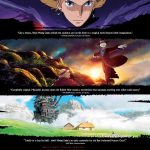The Witch (2015)
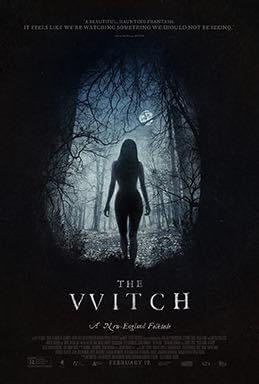
The Witch (2015), written and directed by Robert Eggers, is a period horror film that takes a deeply unsettling dive into themes of religious fanaticism, isolation, fear of the unknown, and family breakdown. Set in 1630s New England, it paints a stark and haunting portrait of a Puritan family torn apart by suspicion and superstition. From its meticulous historical accuracy to its slow-burning tension and psychological complexity, The Witch quickly established itself as a unique entry in modern horror. This eerie, atmospheric film doesn’t rely on jump scares or conventional horror tropes but rather uses mood, tension, and dread to create a deeply immersive and terrifying experience.
Suggested videos for you:
Plot Overview
The film begins with William (Ralph Ineson), a deeply devout man, being banished from a Puritan plantation due to disagreements with the religious leaders of the community. Along with his wife Katherine (Kate Dickie), and their five children—Thomasin (Anya Taylor-Joy), Caleb (Harvey Scrimshaw), twins Mercy and Jonas, and newborn Samuel—they set out to build a new life on the edge of a dense, foreboding forest. Their efforts to create a self-sufficient farm quickly unravel when Samuel mysteriously disappears while under Thomasin’s care. His abduction, implied to be the work of a witch in the nearby woods, sets off a series of tragic events that lead the family into a downward spiral of paranoia, grief, and religious hysteria.
As crops fail and tensions rise, the family begins to turn on itself, with Katherine blaming Thomasin for Samuel’s disappearance. When Caleb ventures into the woods and returns under mysterious, seemingly supernatural circumstances, the family becomes increasingly convinced that they are cursed, and suspicion falls heavily on Thomasin, who is accused of being in league with the devil. The atmosphere of fear and mistrust escalates to a point where the family’s faith in God becomes warped, ultimately leading to their destruction.
The film reaches its horrifying climax as William, Katherine, and the younger children succumb to madness, leaving Thomasin alone and vulnerable. In the final moments, she is lured into the forest by the promise of freedom and power, ultimately choosing to join a coven of witches in an act of terrifying liberation.
Themes and Symbolism
At its core, The Witch is a study of religious extremism, isolation, and the dangers of unchecked paranoia. The Puritanical worldview of the family—where every misfortune is seen as divine punishment or the result of satanic influence—sets the stage for the story’s descent into horror. Their unwavering belief in predestination, sin, and the devil’s omnipresence creates a fertile ground for the fear that gradually consumes them. Eggers does not merely present the supernatural as a source of terror; rather, he shows how the characters’ belief in the supernatural leads them to create their own personal hell.
The film is also a commentary on the repression of female power, particularly in a patriarchal society where women are often blamed for societal or personal failures. Thomasin, on the cusp of womanhood, becomes the scapegoat for the family’s misfortunes, embodying the historical fear of female independence and sexuality. Her eventual “turn” to the witches at the film’s conclusion is both a terrifying and strangely empowering moment, suggesting that the very traits that the family fears—her autonomy and strength—are what ultimately allow her to escape the fate that consumes the rest of them.
The forest serves as a powerful symbol of both the unknown and the primal forces lurking beyond the strict boundaries of Puritan society. It represents a place of danger and temptation, where the family’s worst fears about witches, the devil, and sin seem to manifest. But it’s also a place of liberation, especially for Thomasin. Her journey into the forest at the end of the film can be seen as a metaphorical return to nature and an embrace of the very power that her family sought to repress.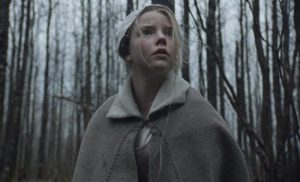
Atmosphere and Style
One of the defining features of The Witch is its painstaking attention to historical detail, which serves to fully immerse viewers in the 17th-century setting. Eggers, who had a background in production design and theater, meticulously researched the time period, basing the film’s language, costumes, and set design on authentic sources from the era. The dialogue is delivered in early modern English, adding to the authenticity and the overall sense of alienation and discomfort that permeates the film.
The stark cinematography by Jarin Blaschke enhances the film’s oppressive atmosphere. Shot with natural lighting, the film often feels cold and claustrophobic, with the family’s isolated farm framed by the dark, menacing woods. The color palette is muted, dominated by greys and browns, which further emphasizes the bleakness of the family’s situation. The visual aesthetic of the film reinforces the sense of doom and foreboding, making the few moments of supernatural horror all the more shocking.
The sound design and score also play an integral role in building tension. Mark Korven’s dissonant, minimalist score—featuring strings and eerie vocal chants—creates a sense of unease that lingers throughout the film. The sound of the wind through the trees, the creaking of the family’s wooden home, and other ambient noises are all used to enhance the sense of isolation and danger. Silence, in particular, is used effectively, with many of the film’s most terrifying moments occurring in near-complete quiet, allowing the viewer’s imagination to fill in the gaps.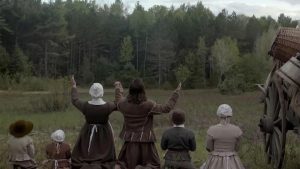
Performances
The performances in The Witch are outstanding, particularly given the film’s heavy reliance on period dialogue and the emotional intensity required of the actors. Anya Taylor-Joy, in her breakout role as Thomasin, gives a subtle yet powerful performance, portraying her character’s journey from innocence to empowerment with grace and complexity. She convincingly portrays Thomasin’s vulnerability and growing frustration with her family’s accusations, and her final transformation is both chilling and cathartic.
Ralph Ineson, as William, brings a deep, resonant gravitas to the role of the stubborn patriarch. His portrayal of William’s pride and religious fervor is nuanced, showing how his unyielding faith ultimately leads to his downfall. Kate Dickie, as the grief-stricken and increasingly unhinged Katherine, delivers a raw, emotionally charged performance that captures the devastating effects of loss and fear on a mother.
Harvey Scrimshaw, as Caleb, also delivers a standout performance, particularly in a key scene where his character experiences a spiritual and physical crisis that is both disturbing and tragic. The child actors playing the twins, Jonas and Mercy, add an additional layer of eeriness to the film, as their playful accusations of witchcraft take on a more sinister tone as the story progresses.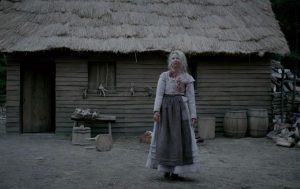
Slow-Burn Horror and Supernatural Elements
The Witch is not a traditional horror film in terms of pacing or structure. It unfolds slowly, focusing on the psychological disintegration of the family rather than on constant scares or supernatural encounters. The horror in The Witch is grounded in the characters’ paranoia, religious guilt, and fear of the unknown. While the supernatural elements—particularly the witch herself—are present, they are used sparingly, with much of the terror coming from the family’s internal struggles and the oppressive atmosphere that surrounds them.
The film’s slow-burn approach may not appeal to all viewers, especially those expecting more conventional horror elements. However, for those who appreciate atmospheric tension and psychological depth, The Witch offers a deeply unsettling experience that lingers long after the credits roll.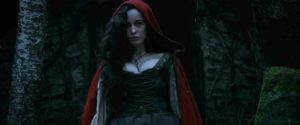
Conclusion
The Witch is a masterclass in atmospheric horror, using its period setting and themes of religious hysteria and female repression to create a film that is as thought-provoking as it is terrifying. Robert Eggers’ meticulous attention to historical detail and his focus on mood and tension over traditional scares make The Witch a unique entry in the horror genre. With outstanding performances, particularly from Anya Taylor-Joy, and a haunting visual and auditory design, The Witch stands as one of the most unsettling and original horror films of the 2010s. Its slow-burn approach and thematic complexity may not be for everyone, but for those who appreciate intelligent, atmospheric horror, The Witch is a chilling and unforgettable experience.

